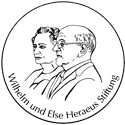 (1)503th Wilhelm and Else Heraeus Seminar
(1)503th Wilhelm and Else Heraeus Seminar
Free-Electron Lasers: from Fundamentals to Applications
April 10 - 13, 2012, Physikzentrum Bad Honnef
Free-electron lasers (FEL) have recently received a lot of attention, mainly due to the development of short-wavelength free-electron lasers such as FLASH(2) in Hamburg operating in the deep UV, and the worldwide first X-ray free-electron laser LCLS in Stanford, USA. Yet free-electron lasers in the longer-wavelength infrared and terahertz regions, like FELBE(3) in Dresden or FELIX in the Netherlands have been operating already for two decades and contributed a wealth of results in various scientific fields.
Common to all free-electron lasers is their wide wavelength tunability by more than a decade, which makes them the light source of choice when no other coherent sources are available in a specific wavelength range.
The goals of the seminar are to
- familiarize students and young postdocs with the basic physical concepts and mechanism of FELs,
- discuss the spectacular possibilities recently developed short-wavelength FELs offer for research in fields like biology, atomic and solid state physics,
- present highlights of research long-wavelength FELs have contributed to in the past decade in the fields of solid state and molecular physics.
Scientific organizers
Manfred Helm, Helmholtz-Zentrum Dresden-Rossendorf
Michael Gensch, Helmholtz-Zentrum Dresden-Rossendorf
Josef Feldhaus, DESY Hamburg
General organization: Wilhelm and Else Heraeus Foundation(4)
This seminar is funded by the Wilhelm and Else Heraeus Foundation.
URL of this article
https://www.hzdr.de/db/Cms?pOid=34069
Links of the content
| (1) | http://www.we-heraeus-stiftung.de |
| (2) | http://hasylab.desy.de/facilities/flash/index_eng.html |
| (3) | https://www.hzdr.de/db/Cms?pNid=471 |
| (4) | http://www.we-heraeus-stiftung.de |

